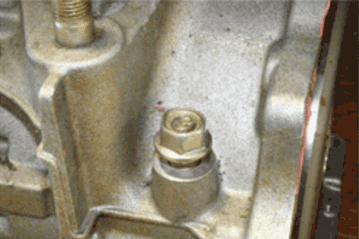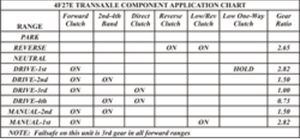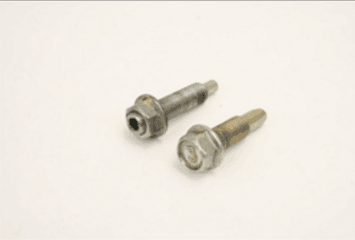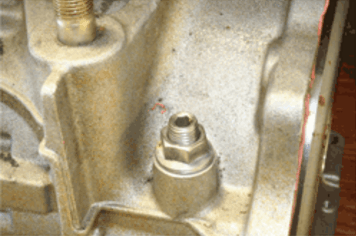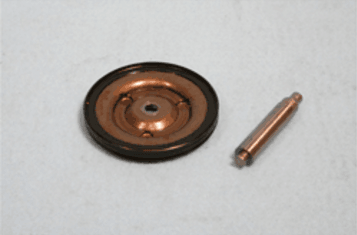Soft 1-2 Flare 3-4 On Ford and Mazda
Ford and Mazda share a 4 and 5 speed front wheel drive transmission together. Ford calls the 4 speed a 4F27E while Mazda refers to it as an FN4A-EL.
| Ford and Mazda share a 4 and 5 speed front wheel drive transmission together. Ford calls the 4 speed a 4F27E while Mazda refers to it as an FN4A-EL. The 5 speed version of this transmission is called by Ford the FNR5 and Mazda the FS5A-EL. One problem that may arise with this transmission both before and after a rebuild is too soft of a shift going into second and a flare or slight engine rev during the transition form third to fourth. The soft shift going into second may be perceived as a flared shift while the shift into fourth may feel too soft. |
| When referring to an application chart like the one provided in figure 1, the apply member for second and fourth gear with this transmission is the 2/4 band. Although the application chart shown in figure 1 is for the four speed version, the first four speeds with the five speed version has the same components applied to achieve a first to second and a third to fourth shift. The first to second shift is a non-synchronous shift while the 3 to 4 is. In other words, all that takes place with a shift into second is the band applies. With a 3 to 4 shift, the forward clutch releases while the band reapplies simultaneously. |
If the adjustment of the band is incorrect, the quality of the shift will be affected. In this case, the band clearance is too loose causing the servo to travel an excessive amount to apply the band. This will cause too soft of a shift going into second and the flare going into fourth. In many cases the band is not adjusted during the rebuild process because the anchor bolt is selective. Figure 2 shows the location of this bolt and on the head of the bolt is a number to identify its selective length. To have the ability to adjust the band would require stocking the various length anchor pins of which there are seven to chose from. There are 7 different selective anchor pins available:
| Bolt Number / Bolt Length
1 / 36.0 mm (1.417 inches)2 / 36.5 mm (1.437 inches) 3 / 37.0 mm (1.457 inches) 4 / 37.5 mm (1.476 inches) 5 / 38.0 mm (1.496 inches) 6 / 38.5 mm (1.516 inches) 7 / 39.0 mm (1.535 inches) |
The procedure to adjust the band is as follows:
1. Remove the selective 2-4 band anchor bolt, and install the 307-416 Band Select Gaugeas seen in figures 3 and 4.
2. Tighten the band select gauge bolt down to 5 N•m (45 in.lb.), and then back the bolt out exactly 1.5 turns.
3. While holding the band select gauge bolt in that position, lightly seat the nut and washer against the case.
4. Remove the band select gauge from the case, without changing the position of nut on bolt.
5. Measure the distance from end of the gauge to the washer.
6. Change the selective bolt as necessary to get the correct anchor using chart.
7. Install the selected band anchor bolt and torque to 45 N•m (33 ft.lb.).
These selective anchor bolts are available through Ford, basic part number 7F206. Two other options would be to acquire a band adjustment stud and locking nut from a Nissan RE4R01A transmission and follow the adjustment procedure, then lock the nut down. This adjustment provides approximately 1/8th inch servo travel. Another option is to purchase an adjuster stud and locknut from Superior Transmission part number K0121.
Another possible cause resulting in similar complaints is a defective servo as seen in figure 5. The apply pin may have become loose at the base where it attaches to the piston. In severe cases the apply pin will have separated completely from the piston. Inspect the bonded rubber for damage or separation from the piston as well. The part number for a new servo from Ford is XS4Z-7D021-AB.
If you found this article to be helpful, let us know below. If you need technical help from one of our tech experts, give us a call at 1-800-245-7722 and we will be more than happy to assist in getting that job done and the customer out the door!


